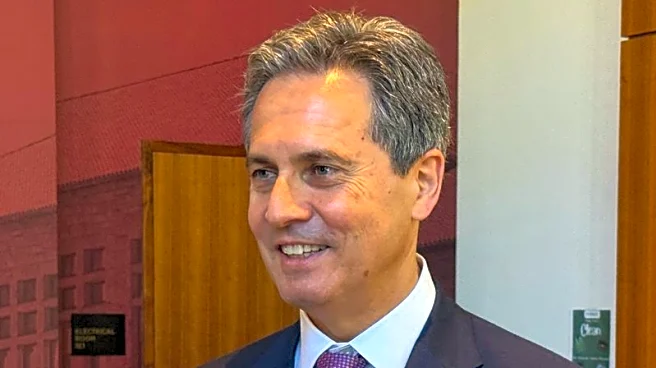What's Happening?
St. Louis Fed President Alberto Musalem recently expressed his support for a 25-basis-point reduction in the Federal Open Market Committee's (FOMC) policy rate. This decision was made to bolster the labor market and counteract potential economic weakening. Musalem highlighted that current data suggests increased downside risks to employment compared to the risk of inflation remaining above target. He described the current monetary policy stance as between modestly restrictive and neutral, which he considers appropriate. Musalem emphasized the importance of maintaining a balanced approach to monetary policy to achieve maximum employment and price stability. He noted that while financial conditions are supportive of economic activity, there is limited room for further easing without risking overly accommodative policy.
Why It's Important?
The decision to reduce the policy rate reflects concerns about potential labor market weakening and the need to support economic stability. Musalem's remarks underscore the delicate balance the Fed must maintain between supporting employment and controlling inflation. The reduction aims to provide insurance against labor market weakness while addressing inflation risks. This move is significant as it highlights the Fed's proactive approach in navigating economic uncertainties, including the impact of tariffs and structural changes such as reduced immigration and AI advancements. The Fed's actions can influence consumer spending, business investment, and overall economic growth, affecting various stakeholders including households, businesses, and financial markets.
What's Next?
Musalem plans to continue refining his economic outlook and assessment of risks to guide future interest rate decisions. He aims to pursue a policy path that equally weighs both sides of the Fed's dual mandate. The Fed will monitor labor market conditions and inflation trends closely, adjusting policy as needed to maintain economic stability. Stakeholders, including businesses and policymakers, will be watching for further signs of labor market weakness or inflation persistence, which could prompt additional rate adjustments.











